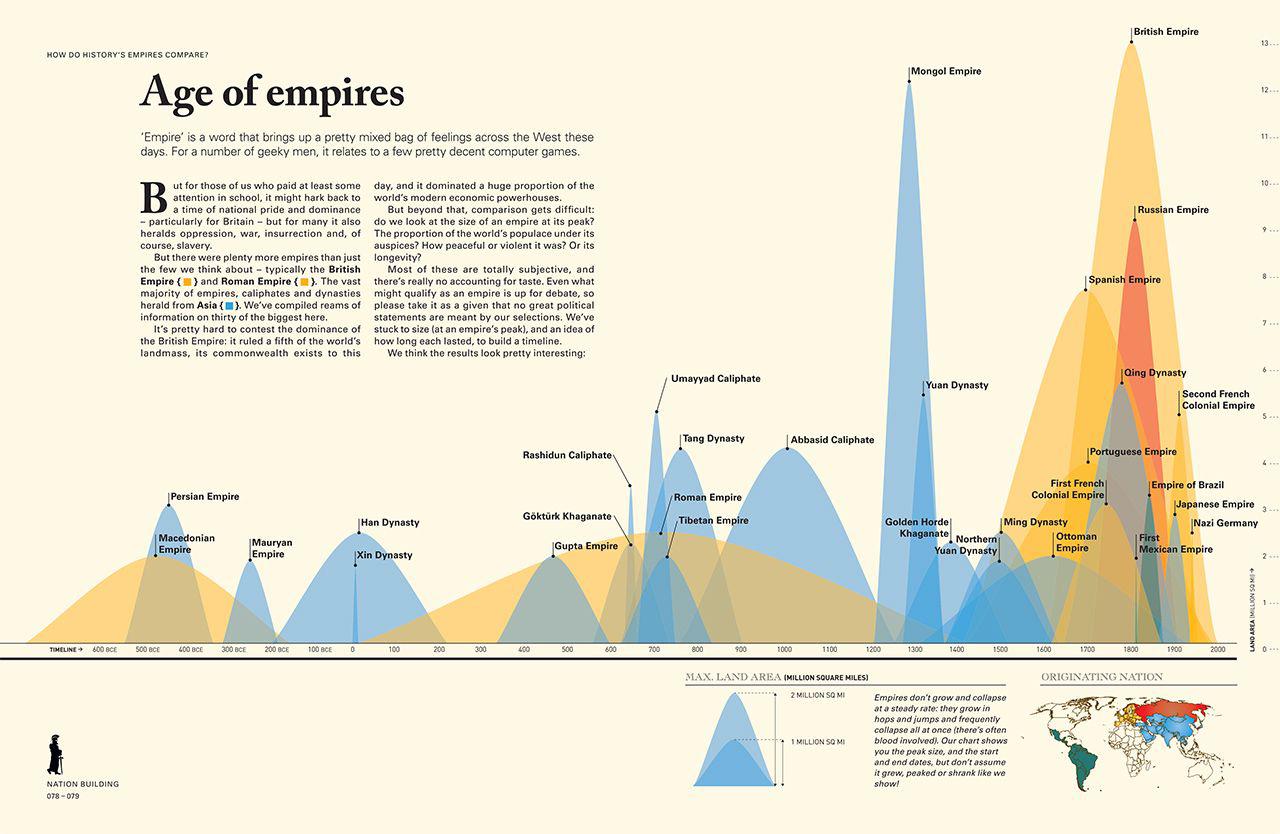The life cycle of various historical empires

The life cycle of historical empires often follows a similar pattern: Rise, Expansion, Peak, Decline, and Fall. While each empire is unique, many exhibit common trends influenced by political stability, military strength, economic resources, and external threats. Here’s an overview of the life cycle of various historical empires:
1. The Akkadian Empire (c. 2334–2154 BCE)
Rise: Sargon of Akkad united Mesopotamian city-states, forming the first known empire.
Expansion: Conquered Sumer, Elam, and parts of Syria, establishing a centralized administration.
Peak: Standardized administration, road networks, and cultural exchanges flourished.
Decline: Internal rebellions, drought, and invasions by Gutians weakened the empire.
Fall: Eventually collapsed under external pressure, leading to a power vacuum in Mesopotamia.
2. The Persian Achaemenid Empire (c. 550–330 BCE)
Rise: Cyrus the Great overthrew the Medes and established a vast empire.
Expansion: Darius I expanded into Egypt, India, and Greece, organizing the empire into satrapies.
Peak: Strong administration, the Royal Road, and religious tolerance under leaders like Darius and Xerxes.
Decline: Heavy taxation, revolts, and military failures (e.g., Greco-Persian Wars) weakened control.
Fall: Alexander the Great conquered the empire in 330 BCE.
3. The Roman Empire (27 BCE–476 CE, Eastern Roman Empire until 1453 CE)
Rise: From a republic to an imperial system under Augustus.
Expansion: Conquered vast territories, including Britain, the Middle East, and North Africa.
Peak: Pax Romana (27 BCE–180 CE) saw economic growth, military stability, and cultural flourishing.
Decline: Political instability, economic crisis, invasions, and division into Eastern and Western Empires.
Fall: The Western Roman Empire collapsed in 476 CE due to barbarian invasions; the Eastern Roman (Byzantine) Empire lasted until 1453 CE.
4. The Mongol Empire (1206–1368)
Rise: Genghis Khan united Mongol tribes and launched campaigns against China, Central Asia, and the Middle East.
Expansion: Rapid conquests, creating the largest contiguous empire in history.
Peak: Controlled China, Persia, Russia, and parts of Europe, facilitating trade along the Silk Road.
Decline: Succession struggles, rebellions, and the rise of independent khanates (e.g., Yuan, Ilkhanate, Golden Horde).
Fall: The empire fractured, with the Yuan Dynasty overthrown in 1368 and the Golden Horde fading by the 15th century.
5. The Ottoman Empire (1299–1922)
Rise: Osman I established a small principality in Anatolia.
Expansion: Conquered Constantinople (1453), expanded into Europe, the Middle East, and North Africa.
Peak: Under Suleiman the Magnificent (16th century), the empire reached its greatest territorial extent and cultural zenith.
Decline: Military stagnation, economic struggles, nationalist uprisings, and European competition weakened the empire.
Fall: Collapsed after World War I, officially dissolved in 1922.
6. The British Empire (c. 1583–1997)
Rise: Maritime expansion, colonization of the Americas, Africa, and India.
Expansion: Dominated global trade, reaching its height in the 19th century with territories on every continent.
Peak: The Victorian era (19th century) saw industrial power, cultural influence, and the Pax Britannica.
Decline: Costly wars (World War I & II), nationalist movements, and economic burdens led to decolonization.
Fall: The empire effectively ended with the handover of Hong Kong to China in 1997.
Each empire’s rise and fall were influenced by internal governance, economic strength, military power, and interactions with other civilizations.
Leave a Reply